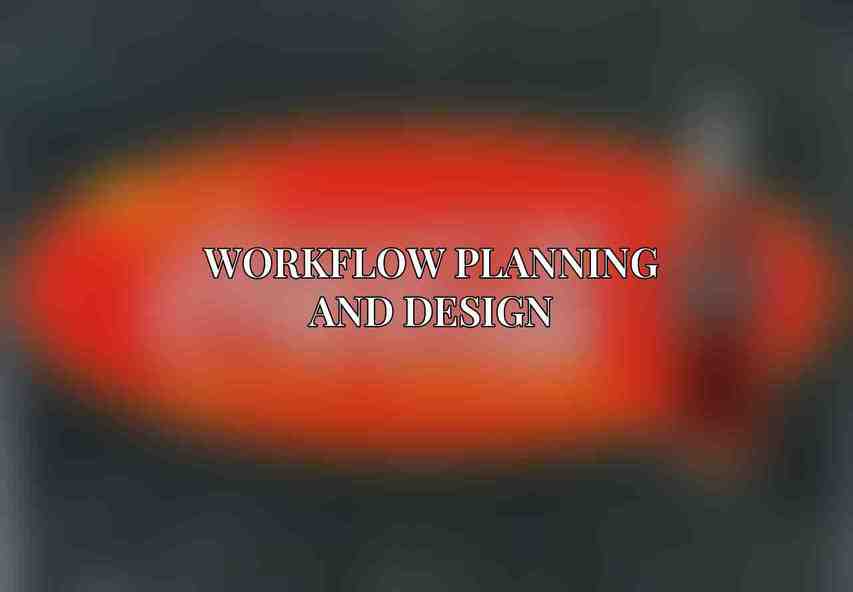Creative Asset Management (CAM) involves the organization and control of digital assets in creative workflows. It encompasses the storage, retrieval, and distribution of various assets such as images, videos, design files, and more. Efficient CAM workflows are essential for maximizing productivity, ensuring consistency, and facilitating collaboration in creative projects. However, many organizations face challenges in streamlining their CAM processes to achieve optimal efficiency. Dive deeper into Securing Your Digital Creative Assets: Best Practices
Workflow Planning and Design

It is crucial to identify key stakeholders and assign clear roles to each individual involved in the process. understanding the different asset types and their unique characteristics is essential for designing a workflow that accommodates varied content requirements. mapping out the workflow process from asset creation to distribution helps in visualizing the flow of work and identifying potential bottlenecks. establishing clear communication channels ensures that all team members are informed and aligned throughout the workflow.
Asset Creation and Ingestion

Techniques for capturing and importing assets play a significant role in the efficiency of CAM workflows. Implementing metadata management and tagging strategies enhances the organization and searchability of assets. Version control and revision tracking mechanisms are vital for monitoring changes and maintaining a history of edits. Quality control and approval processes ensure that final assets meet the required standards before distribution.
Asset Organization and Storage
Proper organization and storage of assets are essential for easy retrieval and management. Implementing standardized file naming conventions and establishing logical folder structures streamline the search process. Organizations must consider the benefits of cloud-based versus on-premise storage options based on their specific needs. Data security measures and access control protocols safeguard assets from unauthorized access. Managing the lifecycle of assets ensures that outdated or redundant files are properly archived or deleted.
Asset Retrieval and Distribution
Efficient asset retrieval is facilitated through robust search and discovery mechanisms that enable users to quickly locate specific assets. Access permissions and user roles dictate who can view, edit, or distribute assets within the system. Various distribution channels and formats should be supported to cater to different project requirements. Integration with other systems, such as content management platforms or design tools, enhances the seamless flow of assets across different stages of a project.
Collaboration and Team Management
Effective collaboration tools promote real-time interaction and feedback among team members during asset creation and review. Clear communication channels and feedback mechanisms foster a culture of transparency and efficient decision-making. Versioning and merge conflict resolution tools help in managing concurrent edits to assets. Task assignment and project tracking features enable project managers to monitor progress and allocate resources effectively.
Workflow Automation and Efficiency
Automation of repetitive tasks, such as tagging assets or converting file formats, saves time and reduces the margin for error in manual processes. Integrating CAM systems with third-party applications enhances the overall functionality and interoperability of the workflow. Analytics and reporting tools provide insights into workflow performance and areas for improvement. Embracing best practices in workflow optimization ensures that processes are continuously refined for maximum efficiency.
Best Practices for Streamlining CAM Workflows
- Use metadata and tagging for efficient asset retrieval
- Centralize assets for ease of access
- Automate asset distribution processes
- Provide user training and onboarding
- Regularly review and optimize workflows for continuous improvement
Case Studies and Examples
Exploring success stories of companies that have effectively optimized their CAM workflows can offer valuable insights into best practices. Specific examples of implemented workflows showcase how organizations have tailored their processes to suit their unique needs. Quantifying the results of workflow optimization, such as increased productivity or reduced errors, demonstrates the tangible benefits of streamlined CAM processes.
optimizing workflows in creative asset management is crucial for enhancing productivity, collaboration, and overall efficiency in creative projects. By following best practices, embracing automation, and investing in robust systems, organizations can streamline their CAM processes for maximum effectiveness. Despite ongoing challenges, the future of CAM workflow management holds promising trends in technology integration and continuous optimization efforts.
Organizations can unlock the full potential of their creative asset management workflows and drive success in their creative endeavors.
Frequently Asked Questions
What is creative asset management?
Creative asset management involves the organization, storage, and distribution of digital assets like images, videos, design files, and more to streamline workflows in creative projects.
Why is optimizing workflows important in creative asset management?
Optimizing workflows in creative asset management helps improve efficiency, reduce errors, and enhance collaboration among team members working on creative projects. Read more about this on How to Organize Digital Assets for Easy Team Access
What are some common challenges in creative asset management workflows?
Common challenges in creative asset management workflows include version control issues, inefficient file organization, slow approval processes, and difficulty in locating specific assets.
How can technology help in optimizing workflows for creative asset management?
Technology tools such as digital asset management systems, collaboration platforms, automation software, and cloud storage solutions can help streamline workflows, improve asset organization, and enhance overall efficiency in creative asset management.
What are some best practices for optimizing workflows in creative asset management?
Best practices for optimizing workflows in creative asset management include creating standardized naming conventions for files, establishing clear approval processes, implementing version control mechanisms, leveraging automation tools, and conducting regular audits of digital asset libraries.

